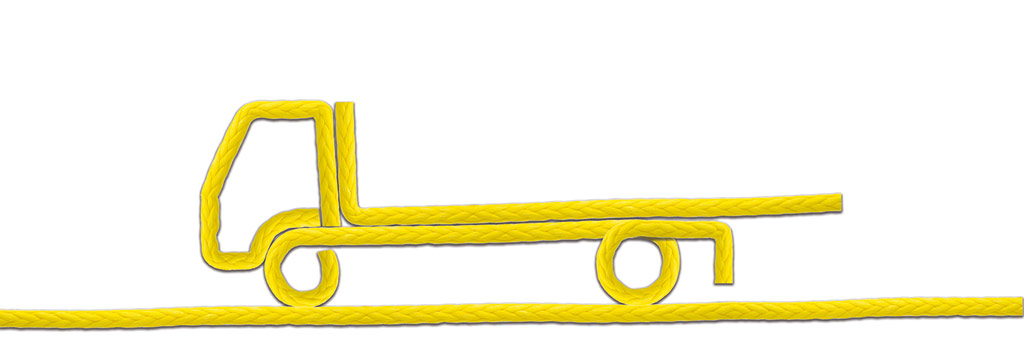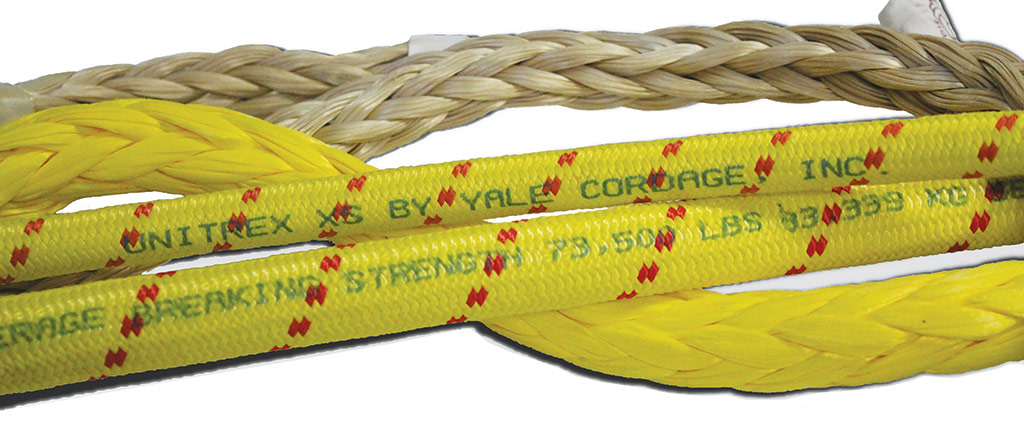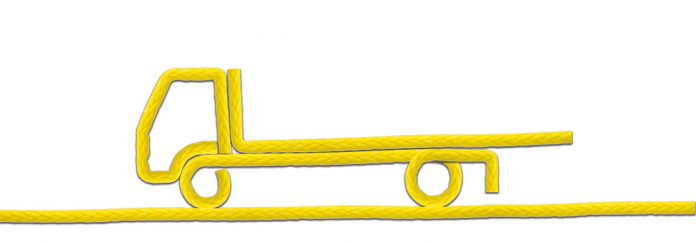
By Bill Putnam
On the winch drums of tow trucks nationwide, high-performance synthetic cordage is rapidly replacing wire line. It’s a change driven dually by efficiency and safety: synthetics are lighter, easier to handle, and just as strong as their steel counterparts; yet if they do fray or part, they don’t carry the same threat of bodily injury from razor-sharp kinks and some fiber choices offer less chance violent snap-backs.
But the most groundbreaking trait of synthetic ropes is their potential to be customized and optimized. Among the thousands of fiber, size, diameter, and construction combinations available today, application-specific synthetic rope manufacturers and certified distributors help users select or design the safest, best rope for the job – and train them on how to use it for maximum safety and product life.

Here are just some of the specific tasks your rope rep can help you do:
Determine the right synthetic fiber for your workload, budget, and climate
Unlike wire, which is fairly synonymous with steel, the synthetic winch line category includes a vast array of fiber compositions. Environmental conditions (temperature and precipitation) and the primary workload of the winch (weight, volume, and frequency of use) largely determine which fiber will work best. Since towers need reliability in all weather conditions, high-tenacity polyester jacketing is commonly used to protect the load-bearing core of the line. The core can be made of polyester; or for heavier lifts, a high-modulus polyethylene (HMPE) or liquid crystal polymer (LCP) core can bolster breaking strength.
Choose the construction most conducive to your environment.
Weather is also a primary driver when it comes to rope construction. Rain, freezing temperatures, sand, wind, heat, and sun exposure all play in to the type of braid you need.
In environments where abrasion is less likely to occur, a 12-strand single-braid rope might be a worthy option, though any 12-strand rope should still have a protective coating to prevent premature wear. Example: Yale Cordage’s Ultrex™.
In environments where the rope is likely to come in contact with plenty of sand, dirt, salt, sunlight, and other abrasive forces, a popular choice is a balanced double-braid, wherein a polyester core is protected by a high-tenacity polyester sleeve. Even if the sleeve experiences surface abrasion or UV damage, the independent core retains its strength. Example: Yale Cordage’s Double Esterlon™.
For ropes used in all conditions and for heavier lifts, core-dependent double braid construction provides the next level of performance. A core of Spectra™ HMPE, one of the strongest fibers available, protected by a high-tenacity polyester sleeve, provides ultimate strength and optimum protection. HMPE is also lighter than polyester, offering excellent maneuverability and sheave cycling capabilities for high-stakes recovery tasks. Example: Yale Cordage’s Maxibraid Plus™.
Align the strength of your rope with the capacity of your rig.
The breaking strength you choose for a synthetic winch line typically needs to be five or more times the rated working load or lifting capacity of your truck winch. Making a correct match is essential to preventing accidental overloads out in the field. But since acceptable working load to breaking strength ratios can vary, particularly with newer rope constructions, this is an area where it can be very helpful for your rope manufacturer or certified distributor to weigh in.
Analyze your work practices to determine energy absorption needs.
A rope of any breaking strength can be compromised if asked to absorb a dynamic load beyond its energy absorption capability. A rope’s energy absorption capability is not related just to its breaking strength; rather, it is ascertained by studying a stress strain curve of load versus elongation. Rope manufacturers understand the metrics involved, and can help you determine which fiber and construction will offer the energy absorption characteristics you need for the loads you typically handle, as well as how much rope you will need to deploy to avoid shock loads.
Understand the splicing requirements of your lines.
When switching from wire, or even older synthetics, to a new synthetic fiber or construction, you may need to change your splicing protocols. Whereas the techniques for older rope styles may have been fairly straightforward, many newer constructions require product-specific techniques. Most rope manufacturers and distributors offer splicing, splice training, and technical support for these proprietary products. Take them up on it.
Custom-fit ropes keep you efficient. These five maintenance tips will keep you safe:
- Inspect before every use – Check the working eye and the area adjacent to it for any movement. The rope should have a Whiplock® or lock stitching at the eye to prevent movement. If the locks are not intact, or you notice the eye becoming larger or smaller in service, replace the rope.
- Use slings – Never choke back on the winch line by securing it around the load and attaching the rope back to itself with a hook or shackle. This will wear out the rope, and may create visible damage for the first four to eight feet above the eye. If you notice such damage, either replace the rope or end-for-end it, placing the new end on the drum.
- Invest in a certified splicer – A certified splicer who is trained on your rope will ensure you get a proper splice every time, with the added benefit of each splice being tagged and recorded for you under the rope’s serial number. This data can help large tow companies effectively track the condition of their ropes and replace them on time.
- Consider proactive replacement – Because a line’s life expectancy can be shortened by shock-loading incidents, and because it’s difficult to definitively know how much damage each incident causes, many users proactively retire their lines immediately after any shock loading occurs. Another common practice is to end-for-end all ropes every 12 months and retire them after two years.
- Dispose of retired lines properly –It is important to properly dispose of a retired rope before it reaches the hands of a user who could overestimate its strength. All too often, used commercial lines get recycled for personal use – thrown in the back of a pickup truck as a tow line, or boat line, or to haul a moose out of the woods. To prevent resultant accidents, retired lines should be cut into short lengths and recycled or repurposed for non-critical uses.
Bill Putnam is president of Yale Cordage.






